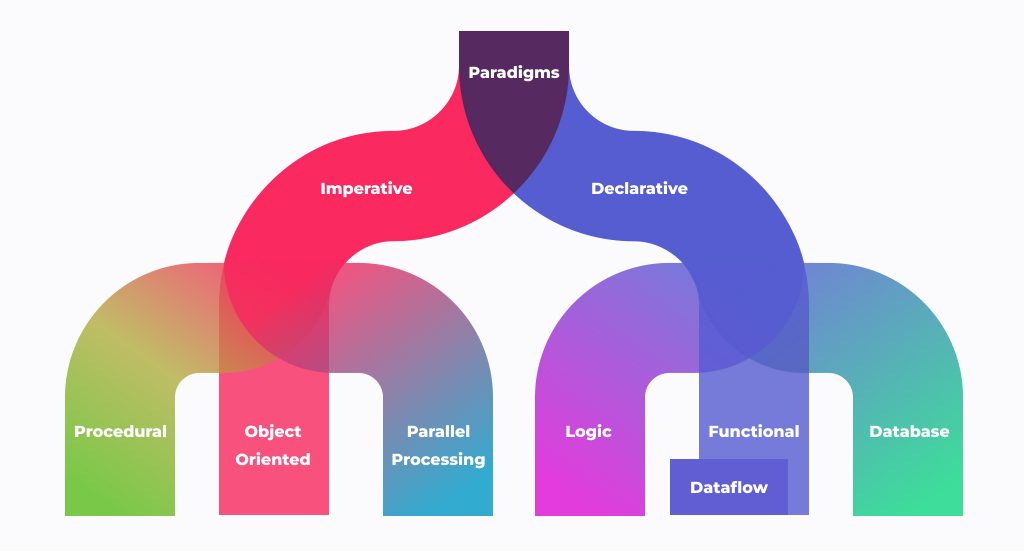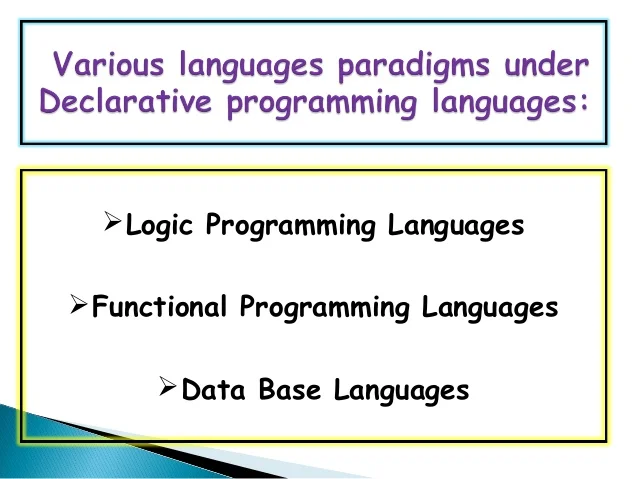Definition and Overview
Declarative programming is a style where you write code that describes what you want, not how to achieve it. It's like drawing a picture of a house rather than explaining how to build it brick by brick.
How Declarative Programming Works
The heart of declarative programming beats around the idea of simplicity. Think of it as setting goals for the computer. You say what the goal is, and the computer figures out how to reach that goal. It’s smarter, faster, and saves you time.

Declarative vs. Imperative Programming
Imagine a GPS system. Declarative is when you punch in your destination and let the GPS figure out the route. Imperative programming is like drawing the map yourself. Both get you there, but one requires less work on your part.

Key Differences
The major difference lies in control. Declarative programming takes the burden off your shoulders, focusing on the end result.
Pros and Cons
Everything has its ups and downs. Declarative programming shines in simplicity and efficiency. It’s easier to understand what the code does at a glance.
Types of Declarative Programming

Functional Programming
Think of it as using building blocks. Each block does something special. You stack them together to create something new, without worrying about how each block is made. That’s functional programming, a key type of declarative programming.
Logic Programming
This is a bit like solving a puzzle. You know what the finished picture should look like, and you give clues to solve it. Logic programming is all about setting rules. The system uses these rules to find the solution, much like completing a jigsaw puzzle.
Database Query Languages
Ever searched for something on a computer? That's what database query languages do. You ask for information, like “Find all emails from John,” and it pulls up the info. It’s another form of declarative programming, making data handling a breeze.
Suggested Reading:Abductive Logic Programming
Features of Declarative Programming Languages
The features of declarative programming languages are:
Ease of Maintenance
Imagine a machine that’s easy to fix. That’s declarative programming for you. Since you're only describing what the end result should be, it’s simpler to change things without affecting the whole system.
Conciseness and Readability
Declarative programming uses fewer lines of code to do more work. This makes your code not only clean but also easier to read like a good story, where every word counts. It's straightforward, leaving no room for unnecessary complexity.
Popular Declarative Programming Languages
The popular declarative programming languages are:
- Haskell: Loved by academics and used for complex applications, it makes coding a logical, math-like experience.
- SQL: The go-to language for managing databases. It lets you handle huge amounts of data efficiently, perfect for tasks like sorting your digital library.
- HTML: The backbone of the web. HTML lets you structure web pages using plain instructions.
- Prolog: Great for tasks that involve complex logic and rules, like solving puzzles or scheduling jobs.
Real-World Applications of Declarative Programming Languages
Declarative programming is not just academic; it's a practical tool used in various industries, like:

Web Development
Creating websites is smoother when using declarative programming languages like HTML. You define what the webpage should look like, and the browser takes care of displaying it correctly.
Database Management
Managing data is a breeze with SQL. You specify what you want from the database, and SQL retrieves it for you. It’s like asking a well-organized librarian to find a book for you.
Artificial Intelligence
AI thrives on rules to make decisions. Declarative programming languages like Prolog help in building these rule-based systems. It’s akin to teaching a robot a list of dos and don’ts.
Advantages of Declarative Programming Languages

Increased Developer Productivity
With declarative programming, you just need to describe the "what" and not the "how." This means less time sweating over the small stuff and more time bringing big ideas to life. It's like painting by numbers, but the picture you end up with is entirely your own.
Enhanced Software Quality
This approach leaves little room for errors because you're not bogged down by complex instructions. It’s akin to giving clear, direct commands instead of a vague wishlist. The outcome? Cleaner, more reliable software.
Better Scalability and Performance
Scaling up with declarative programming is smoother. Since the code is easier to read and manage, adjusting it to handle more users or data is less of a headache. It's like adding more carriages to a train without needing a bigger engine.
Challenges of Declarative Programming Languages
Learning Curve
Grasping the essence of declarative programming can feel like learning a new language. It’s all about mindset shift, akin to moving from drawing detailed maps by hand to just inputting the destination in a GPS.
Debugging and Testing
Finding and fixing bugs in a declarative environment can be tricky since you’re dealing with outcomes, not the steps leading there. Imagine trying to figure out which part of a magic trick went wrong without knowing how the trick works.
Frequently Asked Questions (FAQs)
How does declarative programming differ from imperative programming
Declarative programming focuses on the end goal. Meanwhile imperative programming details every step to achieve that goal, like a recipe versus ordering a meal.
What are examples of declarative programming languages?
Examples include SQL for database queries, HTML for web pages, and Haskell for general programming, each focusing on outcomes over procedures.
Why is declarative programming considered more efficient?
It's more efficient because it requires less code to accomplish tasks and focuses on the result, which simplifies development and maintenance.
Can declarative programming be used for web development?
Yes, HTML and CSS are used in web development to define the appearance and structure of web pages declaratively.
How can one learn declarative programming?
Start with languages like SQL or HTML, use online tutorials, engage in coding challenges, and join programming communities for support and learning.


